A true story genius makes readers invest in characters and feel genuine emotion. How do you do that? First, you need to know characters’ wants, desires and misbeliefs. Learn how with a little help from the Story Genius character template sheet in Plottr.
What is the Story Genius Worksheet for Characters?
Lisa Cron’s Story Genius is a critically acclaimed writing manual. The Story Genius worksheet or character template in Plottr is based on her methods.
In her book, Cron explores the brain science of why stories rope us in. A big part of that is believable characters. This character template asks key questions about your characters’ wants and desires. Also, the deep misbeliefs that hold them back from achieving their goals.
Read on to learn how this template will help you craft winning characters.
How Will the Story Genius Character Template Help You?
Knowing what moves your characters to act helps you create deep arcs. When characters don’t have clear wants and desires, or are mostly passive, readers may wonder, “Who cares?”
Brilliant stories so often make us feel what characters go through. We understand their wants, desires, and what’s holding them back.
The Story Genius character template will help you:
Shape What Characters Want (and Why They Want It)
Why does Luke Skywalker leave the planet of Tatooine? Why does Anna Karenina have an affair with Count Vronsky? Great stories create logical cause-and-effect. Characters’ wants and deeds spring forward out of backstory, beliefs, and misbeliefs.
The Story Genius character worksheet helps you imagine:
- What a character already wants at the start of the story, based on backstory (events that have shaped who they are)
- Why a character wants what they do: What beliefs and end goals fuel them?
The detailed questions about wants and whys in this template will help you build characters who just feel real.
Forge Clear Ideas of Characters’ Fears and Misbeliefs
Wants and desires drive characters to act. Inevitably, they lead to external conflict (clashes with opposing wants or external antagonists).
Internal conflict is crucial, too. The Story Genius character template asks questions about the mistaken beliefs or misbeliefs characters hold.
For example, a character who believes “Nobody will ever love me” may close themselves off to romance. This may then create a self-fulfilling prophecy. The misbelief may be grounded in a powerful past experience or trauma.
The Story Genius approach to character brainstorming will help you think about the deep-seated fears that make people self-sabotage or embrace fear.
Explore How Characters’ Misbeliefs are Holding Them Back
The danger with powerful misbeliefs is that they hold us back. A songwriter thinks the credits are their place, though they crave taking centerstage.
The Story Genius character worksheet helps you think about a powerful push and pull. What people want, and what they need to overcome to really go for it.
Let’s explore examples using the Story Genius character template sheet in Plottr:
Story Genius Character Worksheet (with Examples)
The worksheet for brainstorming characters through Lisa Cron’s method has these six questions:
- What is your character like before the story starts?
- What does your character already want?
- Why does your character want it?
- What is your character’s misbelief?
- Where did that misbelief come from?
- How is their misbelief holding them back from getting their desire?
It’s worth exploring the template as it contains further sub-questions and tips.
Example Applying the Story Genius Method to Anna Karenina
Let’s take an example from Leo Tolstoy’s classic, Anna (the main character in his tragic novel Anna Karenina).
What is Anna Like Before the Story Starts?
Anna is a devoted wife and mother, married to Alexei Alexandrovich Karenin, a high-ranking government official. She is admired for her grace and poise. Yet beneath the surface, Anna is unfulfilled. We see that her marriage lacks passion and intimacy.
What does Anna Already Want?
Her later choices imply that Anna wants freedom from selfless duty and conformity. Her family role and place in high society comes with some rigidity. There isn’t much room for personal expression or romance.
Why Does Anna Want These Things?
Anna’s marriage is loveless, her husband formal and cold towards her. The desire for intimacy and connection is universal and human. Yet Anna’s romantic ideals picture love as something intense and all-consuming (which also has its dangers).
What is Anna’s Misbelief?
Anna Karenina’s misbelief could be put thus: “Love and passion are the ultimate sources of fulfillment and will bring lasting happiness.” Anna’s misbelief doesn’t allow for the fact that putting all your happiness in another person may also lead to jealousy, loss, and other causes of deep pain.
Where Did That Misbelief Come From?
You could say that Anna’s misbelief is a product of her society and times. The norm in her society is for women to focus on being wives and mothers.
This could build a person’s notion that romantic relationships are the main source of happiness and fulfillment.
How Does Anna’s Misbelief Hold Her Back from Getting her Desire?
When Anna has an affair with Count Vronksy, and his passions start to cool, she grows jealous and increasingly unhappy.
Anna’s misbelief that romantic love will bring happiness stops her from finding true independence. We see that romantic love can be volatile and as frustrating as the marriage she tries to escape.
As you can see from the above example, working through the Story Genius character template sheet expands ideas. You may discover ideas about your character’s society or environment. Or the complex ways relationships in their life aid them at times, and hinder them at others.
Ready to outline your own character-driven epics?
How to Use the Story Genius Character Template in Plottr
First, if you don’t already have Plottr, follow this easy installation guide.
Then, make sure you have an active Plottr plan or else test this template with a free 30-day Plottr trial.
Here’s how to use the Story Genius character template sheet:
- Step 1: From the Dashboard in Plottr, open an existing project or start a new one, either a blank project or choose Create From Template
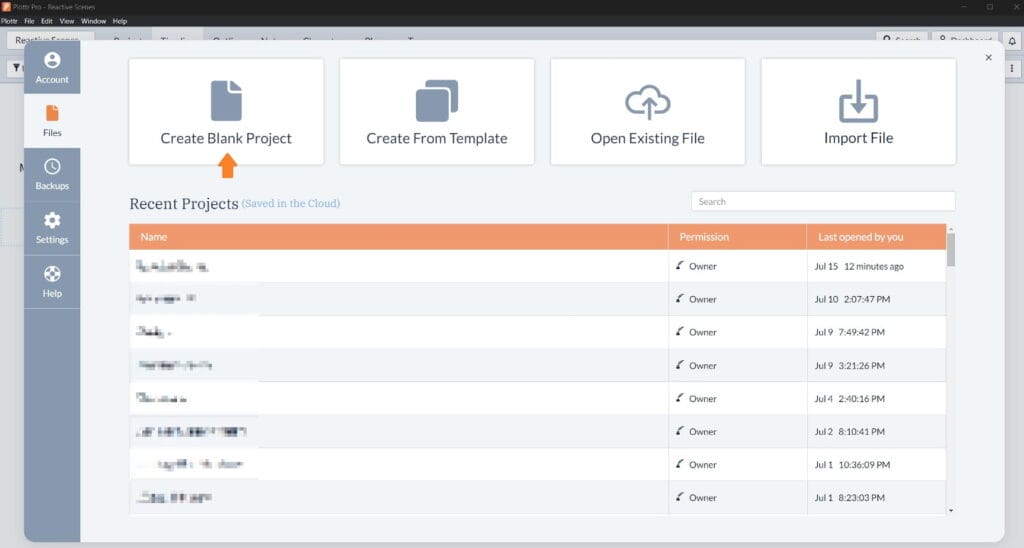
- Step 2: Click the Characters tab in the navigation bar, then click Use Template. If you already have a character you want to add the worksheet to, click on the character and then +Add Template
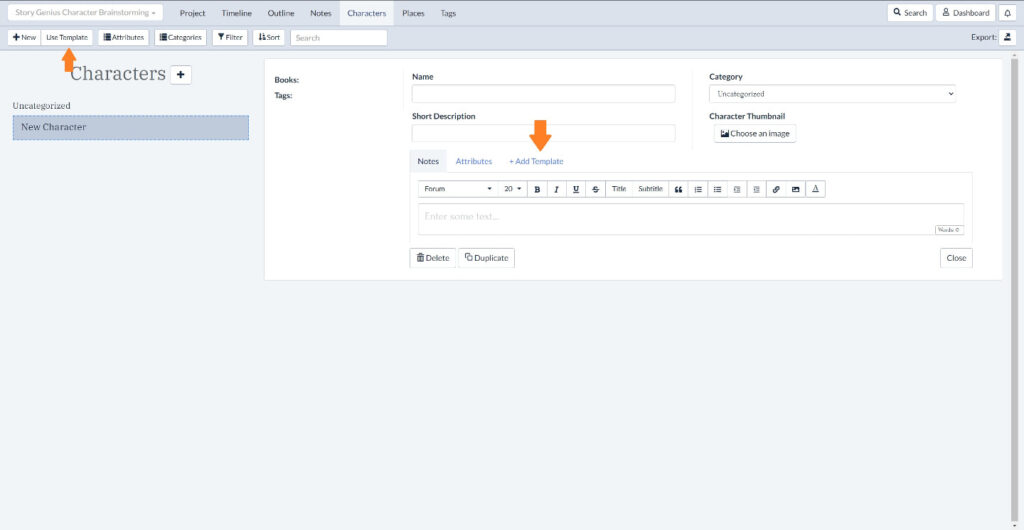
- Step 3: Under Starter Templates, scroll down to Story Genius and select it, then click Choose
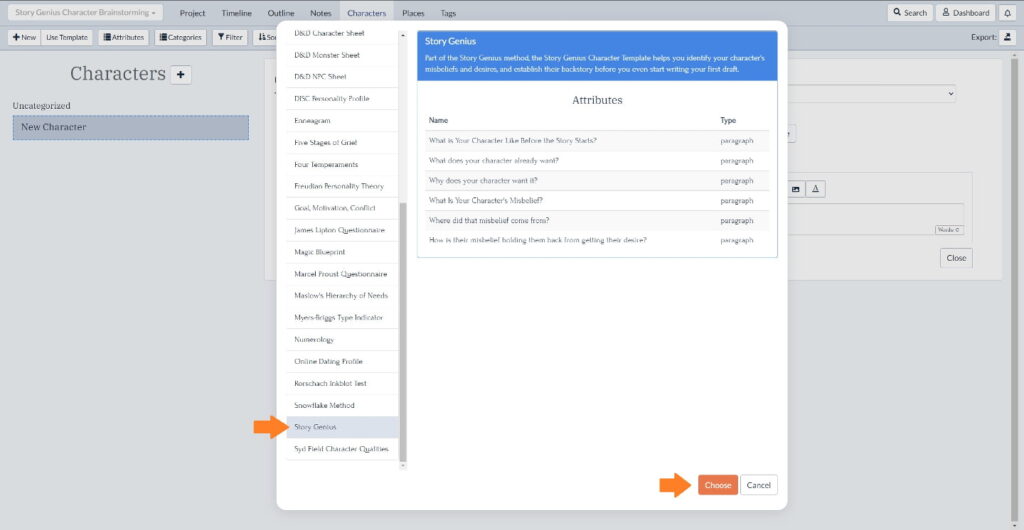
- Step 4: Start filling out the questions drawn from Lisa Cron’s method!
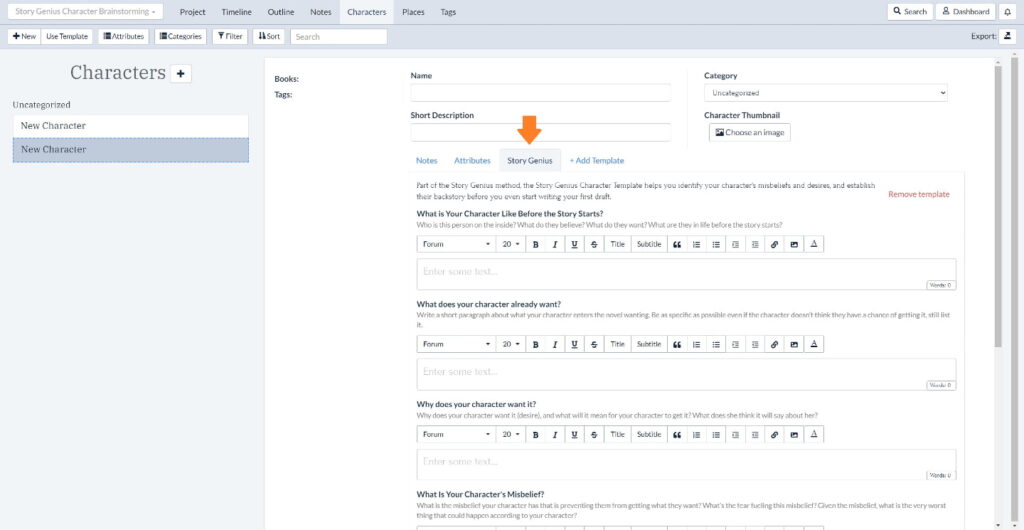
Now you’re ready to win over readers with gripping character arcs.
You can also start a new project from the beginning with the Story Genius Starter Plot Template. This gives you a detailed process for everything from developing plot ideas to brainstorming characters.
There are also two scene templates that are part of this process, one for evaluating plot problems, and another template for crafting scenes that are meaningful to both your plot and characters.
Create and Develop Story Characters the Smart Way
Discover six powerful questions to build vivid character arcs now. Start brainstorming with a free Plottr trial. Let us know in the comments how this character development approach works for you!
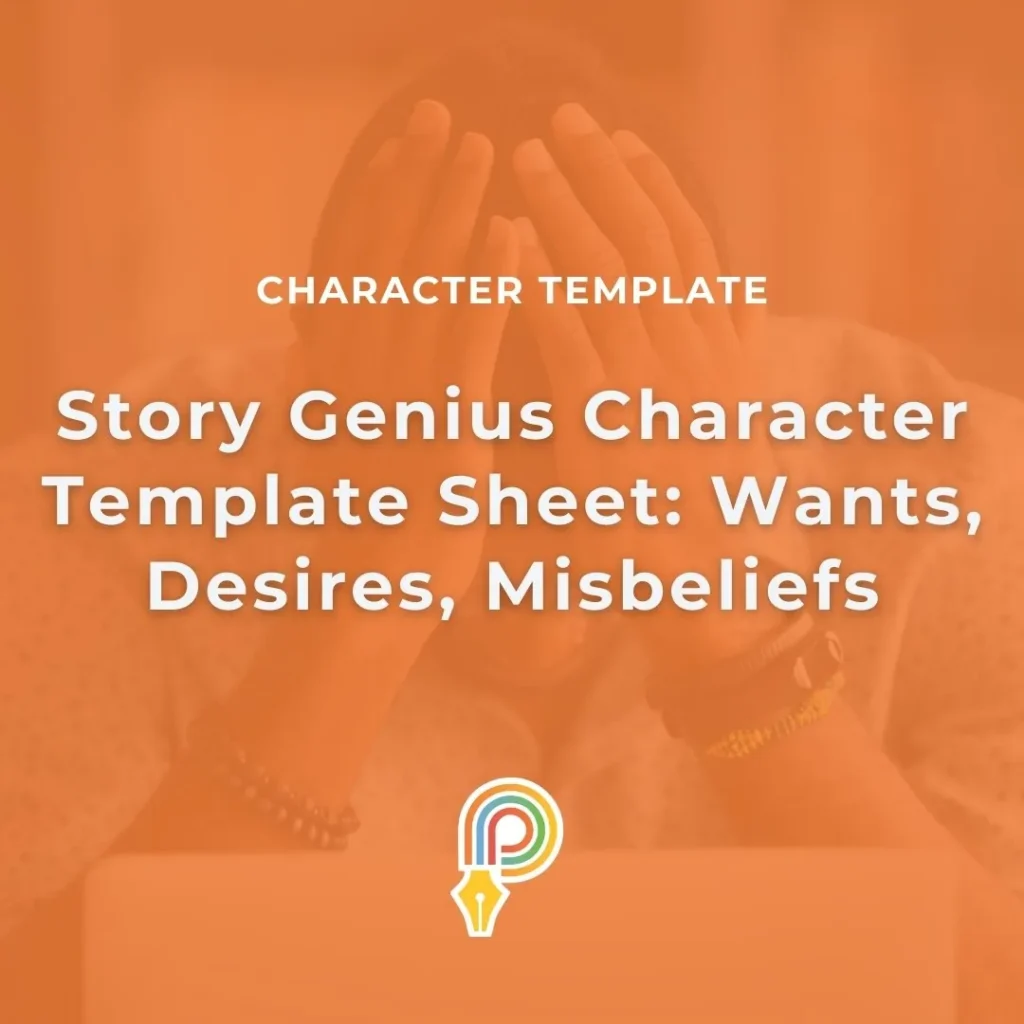

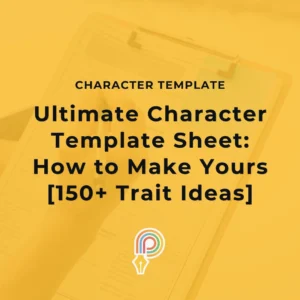
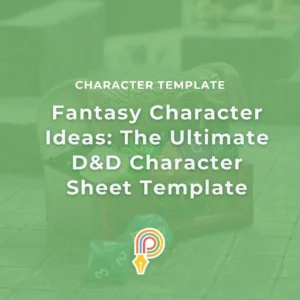
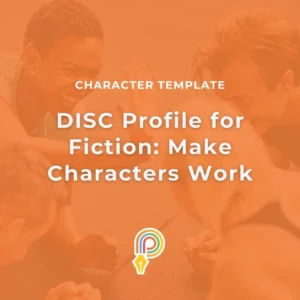
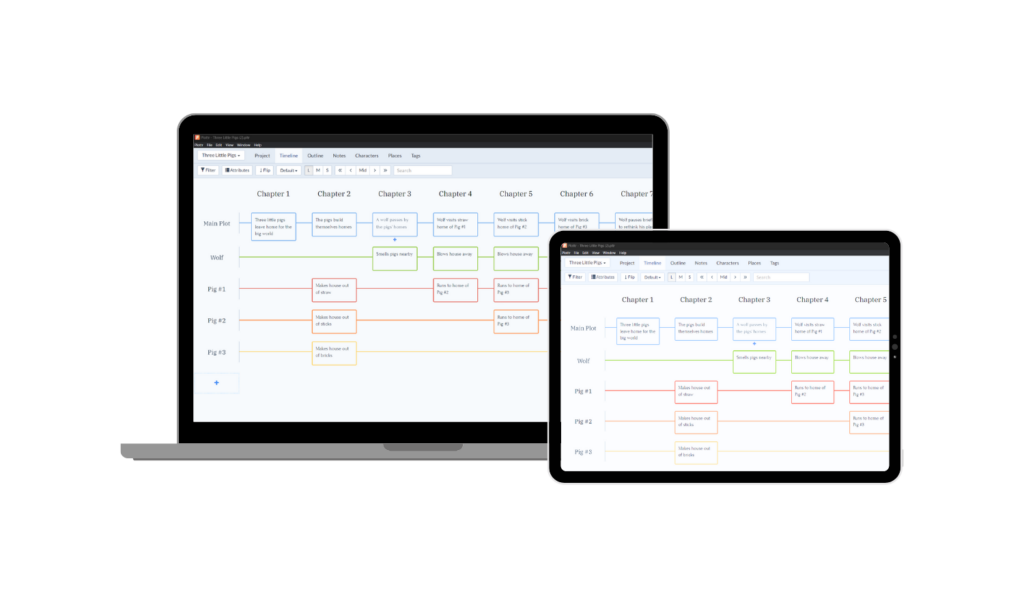
Comments